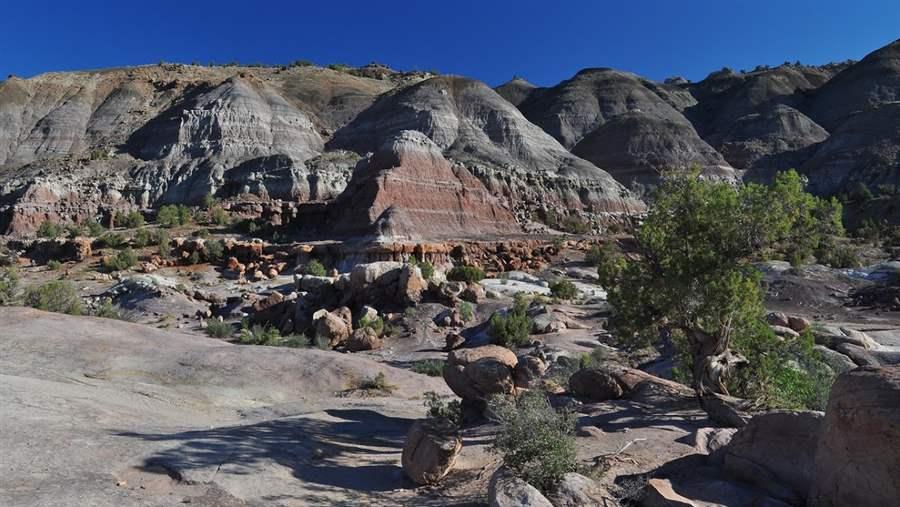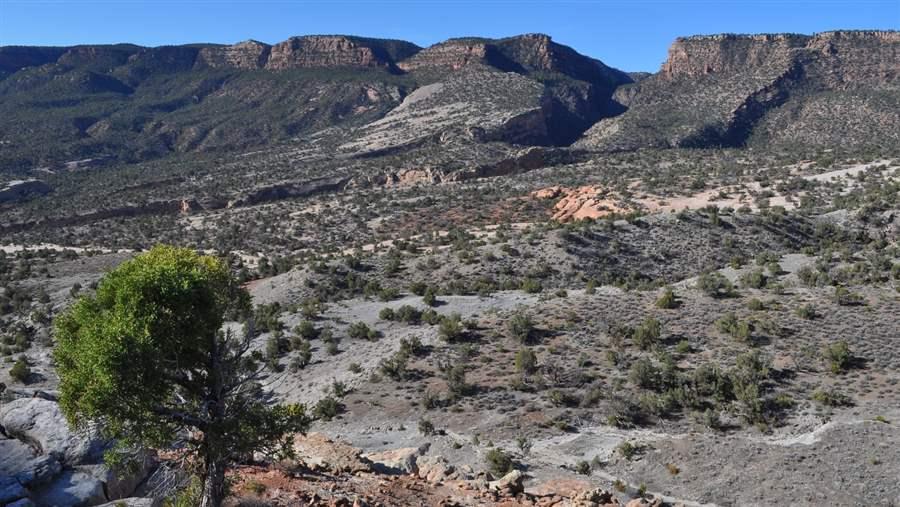Grand Junction Region in Colorado Offers Recreation and Solitude
The mighty Colorado River—cascading from its headwaters in the Rocky Mountains, joining the Gunnison River in Grand Junction, and flowing through the Grand Valley city of Fruita—has carved out massive chasms in western Colorado in its charge downhill. The federal Bureau of Land Management’s Grand Junction field office manages 1.2 million acres of public lands in this region along the Utah border in Garfield and Mesa counties, Colorado, an area readily accessible via Interstate 70. On April 10 the BLM released a proposed resource management plan for Grand Junction that evaluates a full range of management options but falls short on providing a balanced plan for conservation values—such as wilderness, quiet recreation, and wildlife.
 © Scott Braden
© Scott BradenSouth Shale Ridge, near Grand Junction, is made up of geological formations that twist through miles of canyons; it is home to bald eagles and big game.
Grand Junction is a great asset to the local community, attracting tourists from across the nation, pumping money into the area’s economy, and offering all types of outdoor adventure opportunities. Ducks and geese flock to the Colorado River’s slower-moving sections where it meanders through the Grand Valley, making this a prized spot for bird hunters, while the plateaus of the south are prime spots for big-game trophy-hunting of deer and elk. The area is also a popular mountain biking destination, with a terrain to challenge riders of all skill levels. Numerous hiking trails provide beautiful views of mesas, arches, canyons, and the surrounding Rockies.
While a few chunks of public land in this part of Colorado are already protected in perpetuity as wilderness or national conservation areas, hundreds of thousands of acres with high-value wilderness characteristics remain at risk and vulnerable to development under the BLM’s proposed plan. One is the Little Book Cliffs, a geological feature that runs through the Grand Valley with 1,000-foot-high canyon walls topped by mesas. The Little Book Cliffs hosts several of the few remaining roadless areas in the Book Cliffs Range of west-central Colorado and eastern Utah. Book Cliffs Range extends 200 miles east to west and is one of the longest continuous geological features in the world.
 © Scott Braden
© Scott BradenColorado’s Bangs Canyon lies southwest of Grand Junction and includes high-desert canyons and plateaus overlooking the Grand Valley and Grand Mesa.
The Pew Charitable Trusts, in cooperation with local partners, including Conservation Colorado and The Wilderness Society, engaged in this planning process to help ensure an appropriate balance between conservation and development. Local partners conducting their own inventory of lands within the Grand Junction region found that the BLM’s analysis failed to recognize large roadless areas brimming with opportunities for solitude and quiet recreation and that the wild character of places such as Cow Ridge, Prairie Canyon, and Granite Creek was discounted. Pew and its partners believe that the Grand Junction BLM plan deserves better balance, including a more accurate assessment of lands with wilderness characteristics and a greater proportion of protected public lands.
The public still has time to weigh in on how the BLM should protect this area. Information about the management plan is available at http://www.blm.gov/co/st/en/fo/gjfo/rmp/rmp.html.



